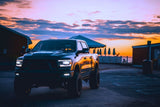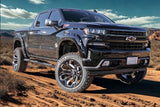What is mud bogging? Mud bogging is a thrilling off-road motorsport that has captivated enthusiasts across the United States. It combines the rush of speed with the unpredictability of driving through deep, sticky mud. While it may seem straightforward, mud bogging demands a blend of the right vehicle modifications, knowledge of the terrain, and adherence to safety standards. Whether you're a seasoned off-roader or new to the sport, there’s a lot to learn before diving into the mud.
What is Mud Bogging?
Mud bogging, often referred to simply as "mudding," involves driving a vehicle through a stretch of deep mud, with the goal of making it to the other side as quickly as possible. The challenge? The mud acts as a formidable obstacle, requiring not only power but also technique to avoid getting stuck. Events vary in format, but generally, the tracks are designed to test both the vehicle's capabilities and the driver's skill. While some events feature structured courses, others allow for natural, open bogs where the terrain can be wildly unpredictable, adding to the excitement.
There are different styles of mud bogging courses:
- Hill and Hole: This variation consists of 60-foot-wide, 200-foot-long tracks featuring mud pits, hills, and other obstacles to challenge drivers.
- Flat/Progressive Tracks: A simpler format, these tracks are flat with a few sand drag obstacles, making them less technical but still demanding.
Popular Mud Bogging Events
While mud bogging can be found all over North America, it’s most popular in the southern United States, where the climate and terrain are conducive to the sport. Some of the largest and most well-known events include:
- Barnyard All Terrain
- Louisiana MudFest
- Vermonster 4×4
- Florida Slingin’
- For more mud bogging events near you, check out the full schedule here: Trucksgonewild.com Events
These gatherings draw in thousands of spectators and participants, with many events broadcasted on channels dedicated to off-road motorsports, such as Mud Truck Television.
Building Your Mud Bogging Machine
To fully enjoy mud bogging, you need more than just a vehicle that can handle dirt roads. You’ll require specialized modifications and safety equipment to ensure both performance and protection.
The Ideal Vehicle
While any vehicle can theoretically be modified for mud bogging, certain types make the process a lot easier (and cost-effective). Ideally, you'll want a four-wheel-drive truck or SUV built to handle rough terrain. Vehicles like the Jeep Wrangler, Toyota Tacoma, Ford F-150, and Ford Bronco are great starting points. Their high clearance and factory 4WD capabilities provide a solid base for customization. For those seeking a challenge, even a sedan like a Subaru can be modified for mud bogging, though it will require significant investment.
Lifted Suspension
Mud bogging places unique demands on a vehicle's suspension system. A lifted suspension is critical for clearing deep mud pits and avoiding water damage. The goal is to raise the vehicle high enough that mud and water don’t enter vital components like the exhaust and intake. Lifting the vehicle also helps maintain traction and reduces the likelihood of getting bogged down.
Mud Tires
Standard all-terrain or highway tires won't cut it for mud bogging. You’ll need dedicated mud-terrain (M/T) tires, designed with deep, aggressive treads to push through soft, slippery mud. These tires have stronger sidewalls to withstand punctures, and their unique design helps to expel mud, ensuring better grip and less chance of getting stuck. Moreover, mud tires can be run at lower pressures, giving the vehicle a larger contact patch with the ground for better traction in the bog.
Waterproofing
Driving through deep mud often means encountering water, which can wreak havoc on a vehicle's electronics and engine if not properly prepared. To protect against this, waterproofing modifications are essential. This can range from installing snorkels to ensure the engine continues to breathe clean air above the waterline to sealing off sensitive electrical components. Depending on the depth of the mud and water in your chosen event, you may need more extensive waterproofing to prevent damage.
Essential Safety Gear for Mud Bogging
Safety should always be a priority in any motorsport, and mud bogging is no exception. The unpredictable nature of the terrain means you need to be prepared for the unexpected. Some key safety items include:
- Helmet: Mandatory for many events, helmets protect drivers from head injuries in the event of a rollover or collision.
- Fire extinguisher: Having one on board is crucial in case of engine fires or other emergencies.
- Roll cage: A reinforced cage provides protection if your vehicle flips or rolls over in deep mud.
- Recovery kit: Including tools like tow straps and shackles, a recovery kit is essential for getting unstuck when the mud becomes too much.
- Portable utility shovel: Useful for clearing mud from tires or digging yourself out of a particularly sticky situation.
- Gloves and eye protection: Mud can get everywhere—including your eyes—so protective gear is a must.
Preparing for Your First Mud Bogging Event
Before attending your first mud-bogging event, it’s important to be well-prepared. Here are some steps to help you get ready.
Join the Community
One of the best ways to learn about mud bogging is to engage with others in the off-road community. Join local clubs, attend events as a spectator, and make connections with experienced mudders. Not only can they offer valuable advice, but they may also share insight into specific courses or conditions in your area. Watching events on TV or online can also help you familiarize yourself with the sport.
Know the Rules
Each mud bogging event will have its own set of rules and regulations. These can include minimum age requirements (typically 16 or 18), vehicle specifications, and safety protocols. Make sure you thoroughly review the rules before heading to the event. Common requirements include having a fire extinguisher, securing toolboxes and spare wheels, and ensuring your vehicle has proper roll protection.
Terrain Awareness
Before driving through any course, take time to inspect the terrain. Check for obstacles, such as rocks or deep water, that could pose a challenge. Understanding the terrain helps you make decisions about speed, traction, and the best path to take. Knowing the size and nature of hills or other obstacles will also ensure your vehicle is properly equipped for the event.
What to Wear
Mud bogging is a messy sport, so dress appropriately. A raincoat and boots are practical choices as they’re easy to clean and keep you relatively dry. Additionally, a helmet is often required, and protective eyewear is highly recommended to shield your eyes from flying mud.
Prep with Reaper Offroad Lifts
Mud bogging is a unique and exhilarating motorsport that requires a mix of skill, the right equipment, and respect for the terrain. Whether you’re aiming for casual weekend fun or competitive events, preparation is key. With the right vehicle, modifications, and safety gear, you'll be ready to conquer the mud and enjoy the thrilling world of mud bogging. Our products are engineered by experts who understand the mechanics behind suspension geometry, weight distribution, and stability. We've considered every possible scenario, ensuring you can go mud-bogging confidently. Visit our website today to explore our range of lift kits and take your truck’s performance to the next level. Browse our online store now! Escape the crypt of the commonplace; elevate your vehicle with our lift kits and let it become a force to be reckoned with.





0 comments